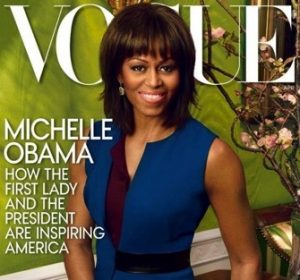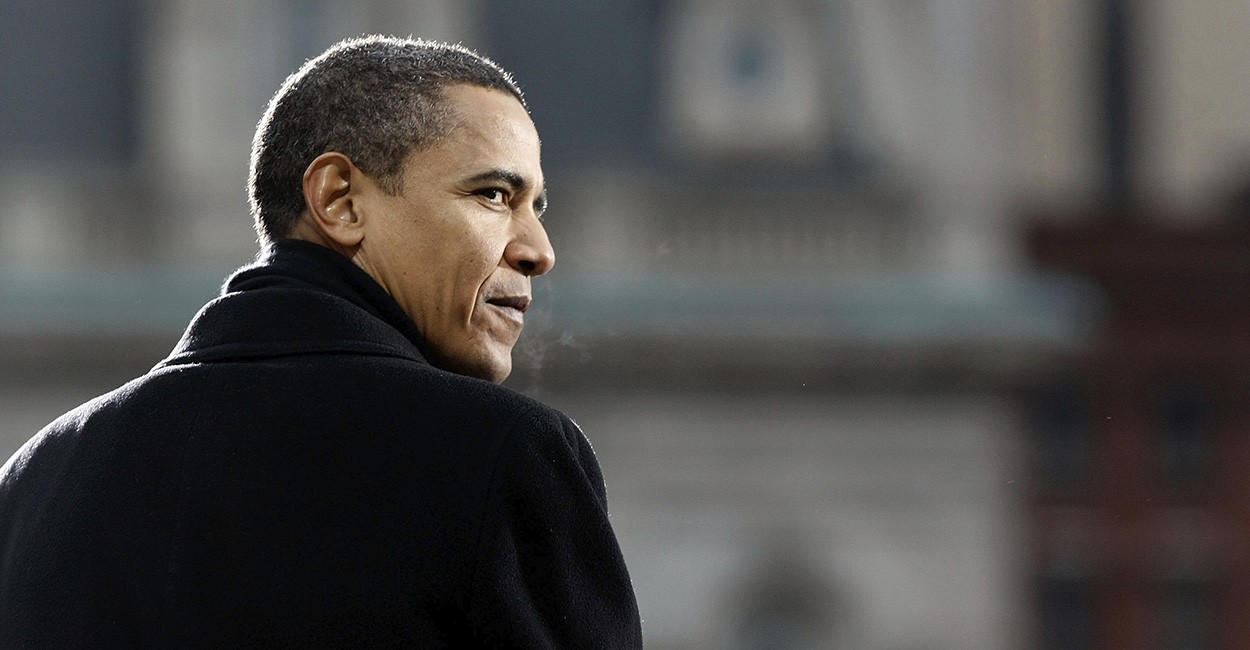
It is nearly impossible to log onto Tumblr and avoid spotting a .gif featuring a dancing Barack Obama, or an article about Michelle wearing yet another gown by Jason Wu, or photos catching Malia and Sasha taking a selfie. In America, the President always endures some amount of fame, but at some point since the 2008 campaign trail, the Obamas upgraded from political figures to A-list celebrities, recently caught brushing their shoulders off with Jay-Z and Beyoncé. Has the surge in social media turned them into a pop culture sensation? Perhaps more importantly than the reasons why is the phenomenon’s impact on the popular perception of American government. In the past five years, the public has witnessed the first lady go from a working professional mom look to one of the best dressed women in America, up in the ranks with Emma Stone and Lily Kwong, and results from that transformation have proved quite beneficial for her.
Even more so than her husband, Michelle Obama’s celebrity has piqued dramatically in the past few years, credited in large part to her highly lauded fashion choices. Frequently landing on best-dressed lists of respected style outlets, not to mention a Vogue cover in 2009, she receives praise for her modern and versatile style. She vacillates between haute couture gowns by first class designers and chic elements from stores like J. Crew and Target, embodying that “We’re just like you” mantra that the Obamas have mastered. She has also behaved smartly by keeping distance between herself and designers, while frequently helping new designers by giving them their big break. In a New York Times article, author Cathy Horne claims that becoming a fashion icon has “effectively protected” her in a “culture obsessed by celebrity and style.” This assessment makes a lot of sense considering how little the first lady has been scrutinized for her spending on wardrobe, particularly for a pair who rallies against inequality while recoiling from recession. Still though, the media has largely put away criticisms and chosen to praise her new confidence and fabulous clothes.
There is no doubting the comparison to “American royalty” Jackie Kennedy is a legitimate and worthy one. A Wall Street Journal article by Shelley Branch, “Michelle O Meets Jackie O” charts out the resemblance beautifully — the hair, the pearls, the classic skirt suits. Beyond the style and popularity, these two women have also been vital to the marketing of their husbands’ campaign and images. According to Horne, Jackie struggled to piece together “state clothing” ensembles that she viewed as a uniform, whereas Michelle has flourished with the help of her personal wardrobe assistant. Jackie also “received stinging criticism for her expensive clothing and bouffant hair,” while Michelle’s transformation “has been fascinating to watch, in part because it happened with very little pushback from the news media.”
In a 2012 Gallup poll, Michelle enjoyed a 66 percent favorable rating with Americans, which has actually increased considerably from the campaign in 2008, when it was 54 percent, coinciding with her rise in the fashion world. Comparatively, Laura Bush held an average 73 percent rating, and Hilary Clinton 55 percent. Michelle’s rating dominates her husband’s as well, which hovered around 51 percent in February 2013. She is particularly revered by women and 18-29 year-olds, reaching 70 and 74 percent approvals respectively, according to Pew Research. Gallup also points out “Americans generally have more positive opinions of the first lady than of the president, perhaps because of the first lady’s largely ceremonial position.”
With respect to her rising stardom and growing legacy, Obama’s political aims have remained mostly stagnant, not being particularly positively or negatively affected by that aspect of her persona. At times, however, her healthy eating campaign, encompassed by her project Let’s Move, seems overshadowed by media coverage of what she is wearing, circa mid-February when “the bangs” happened. For example, in a search performed on February 18, 2013, letsmove.gov was absent from the first page of Google results for “Michelle Obama,” while 5 hits were fashion-related, and one links to the Pinterest account run by her staff. Let’s Move actually does not show up until the third page of results.
Americans’ admiration of Obama and her personal history place her in a unique position to make waves in areas about which she is passionate, like educational reform and healthy lifestyle, though she has received mild criticism for not doing more to those ends. Gallup speculates that if she did decide to enter into the “political arena, it could have a negative effect on how Americans view her,” but also that her “image would recover once she steps back from that role.”
Oddly enough, Michelle’s rise as a fashion superstar seems to have only helped, not hindered her, which supports the claim regarding America’s obsession with celebrity and style. Clearly the public has decided to overlook what has historically been a contentious issue for female politicians, dressing too glamorously, perhaps because it believes in her endeavors and her power to accomplish such, or perhaps because it has witnessed the internal transformative confidence instilled in her. Either way, with yet another Vogue cover coming up this year, Michelle’s persona as a modern fashionista, is in its infancy and likely to grow, maybe even culminating with a line of her own one day.

